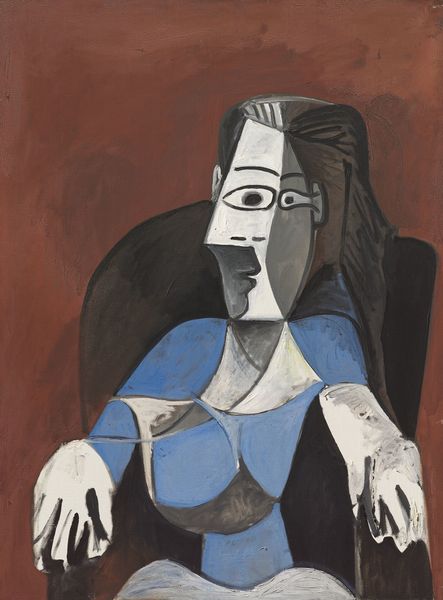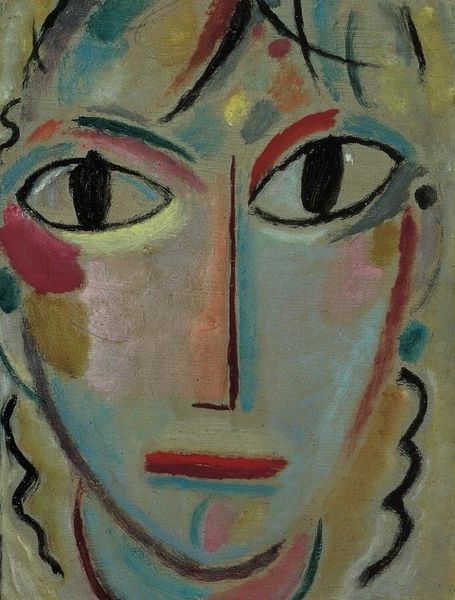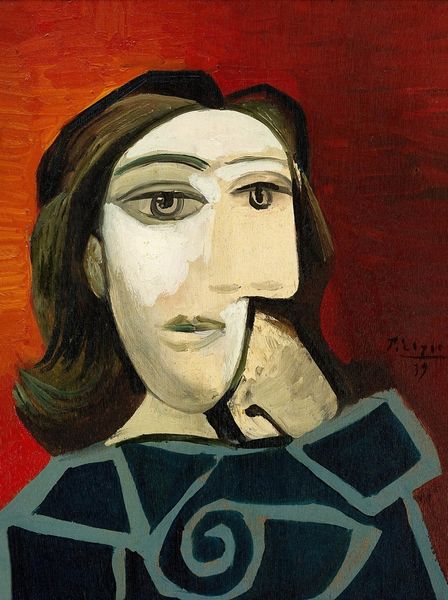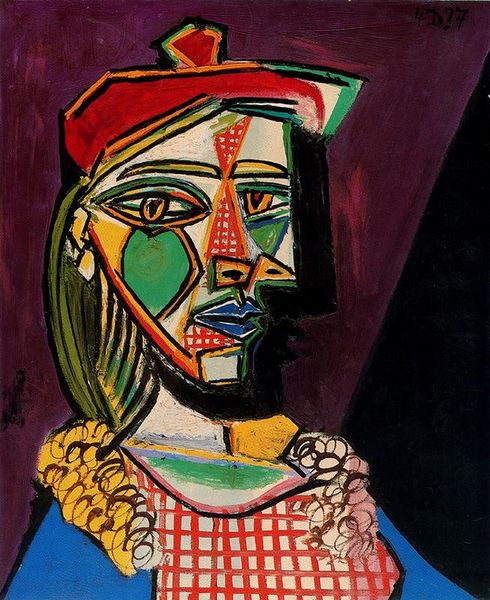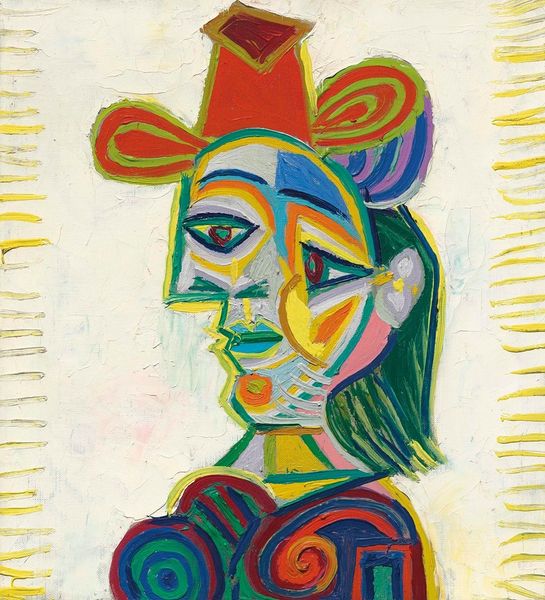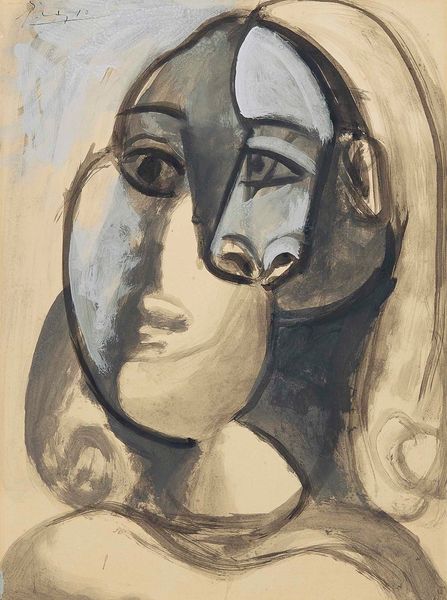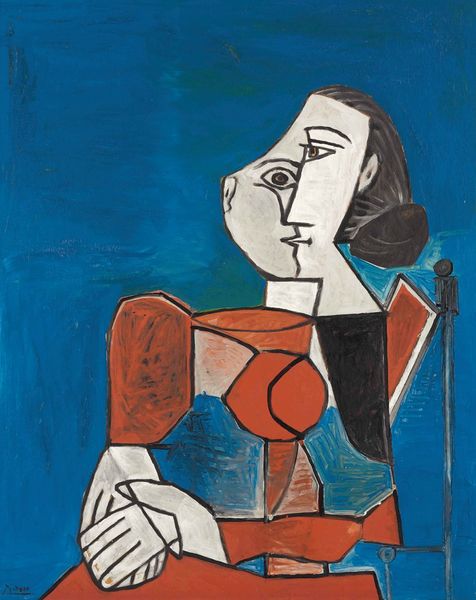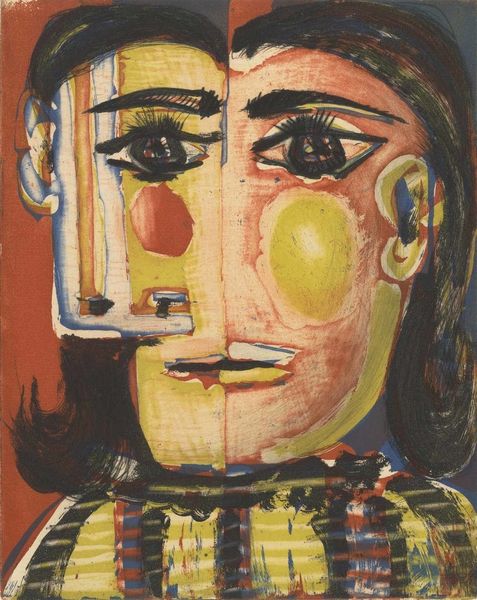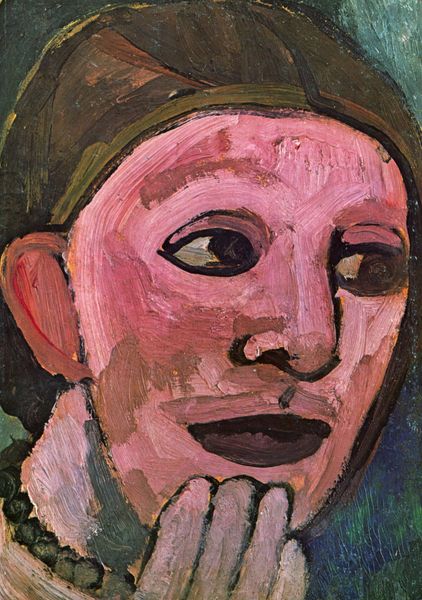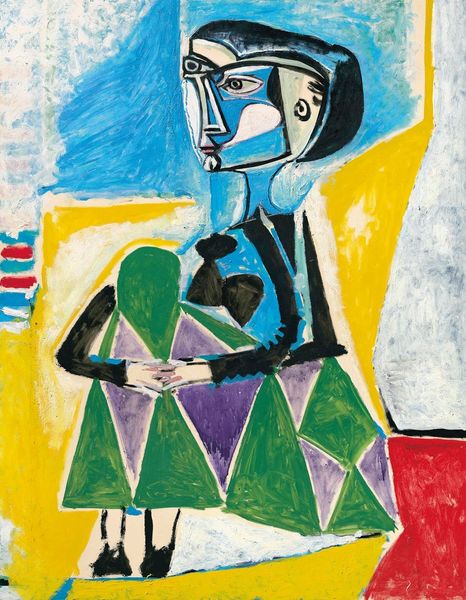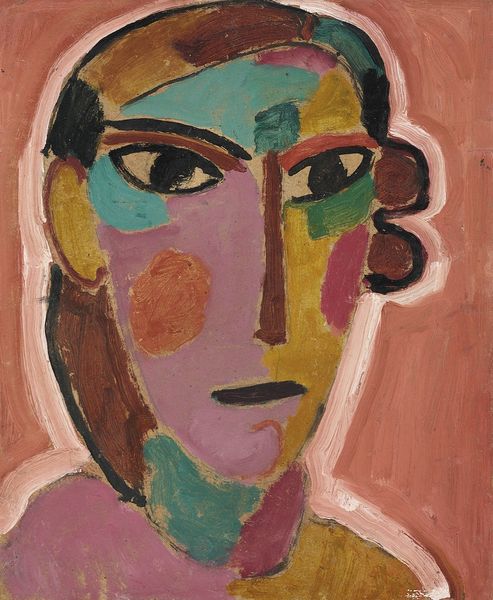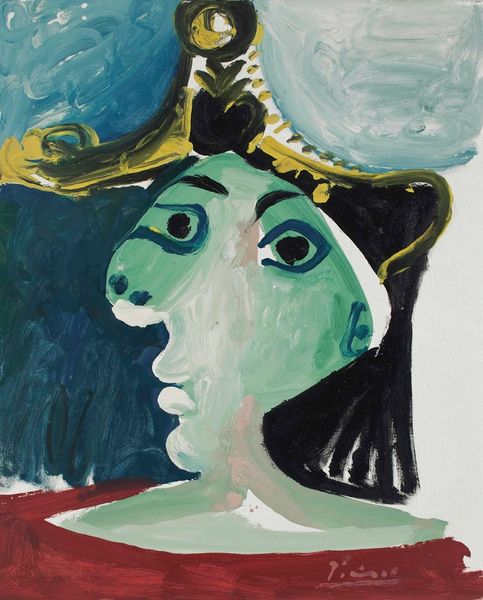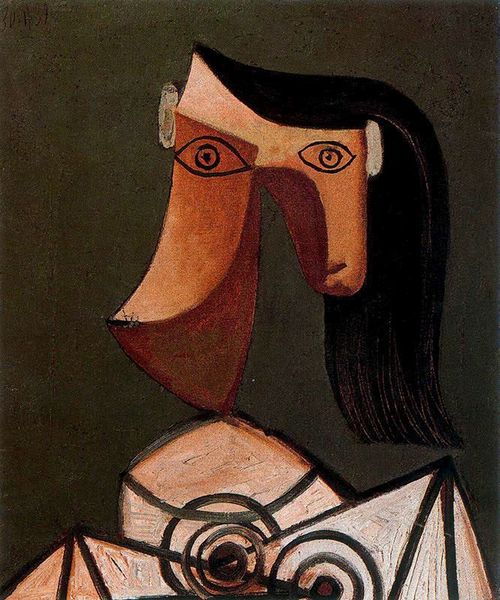
Copyright: Public Domain: Artvee
Editor: This is Picasso's "Buste de femme à la robe brune", painted in 1939. It's oil on canvas and… strikes me as both unsettling and strangely playful. All those dislocated features. What do you see in this piece? Curator: Beyond the obvious Cubist fracturing of form, it's essential to consider the context. This was painted in 1939, on the brink of World War II. Do you notice how the distorted features, the almost aggressive color choices, reflect a world on the verge of collapse? Editor: Yes, now that you mention it, there’s definitely a sense of anxiety. Almost like a funhouse mirror reflecting a deeper unease. But what about the subject? Curator: Consider the power dynamics inherent in portraiture, especially with a male artist depicting a female subject. How might Picasso be exploring—or perhaps even exploiting—the female form at a time of such widespread societal disruption and fear? The unsettling gaze, the fragmented face...is this a commentary on the vulnerability of women during wartime, or a perpetuation of their objectification? Editor: I hadn’t thought about it in terms of gendered power. So, the disruption isn't just aesthetic; it's also challenging social norms? Curator: Precisely. Art doesn't exist in a vacuum. We must always interrogate the historical and cultural forces that shape both the artwork and our interpretation of it. Editor: That gives me a lot to think about. It's much more than just a distorted portrait; it’s a reflection of a turbulent moment in history and a complex commentary on gender. Curator: Exactly, by linking the visual language to broader social and political themes, we enrich our understanding of both the art and the world it reflects.
Comments
No comments
Be the first to comment and join the conversation on the ultimate creative platform.
